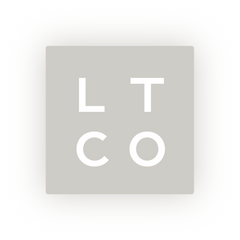A Little Chat With Alex Drapper - MUD.CLAYPLAY
I’m 49% therapist 51% mud-manipulator. Fanatical about creating conversation and connection a little off-kilter. A non-mainstream approach to therapy and community. Working with mental illness and addiction, I've found that changing the channel on our interventions is necessary. Play and presence are paramount and connection is everything.

MUD began in a drug and alcohol rehab in the NSW hinterland amidst three weeks of torrential rain and 16 residents that were cabin fevering HARD. No one had played with clay outside of school and they certainly didn’t expect to be getting muddy as part of their recovery. 20 minutes quickly turned into four hours, and tension melted into the coiled wonky coffee mugs. Needless to say, Friday afternoon mindfulness with mud was a thing, and mud was smuggled into resident bedrooms from thereon in.
The thirst for a backdoor into meditation was felt throughout the wider community, so in February 2020 MUD Friday’s was born to offer just that, mediclaytion 101. Operating from the Byron based MUD Den, where humans take a seat at the community table to get back in touch with their kid selves, to play in the mud fully immersed in the sensory experience. Learning presence, letting go, detachment to a desired result and connection with themselves and those sitting next to them.
When we arrive at the point of absence and disconnect in adulthood, it begs the question, when did we stop playing and why? And not the kind of play with an end goal in mind, but simply play for the hell of it. It seems that many of us have lost touch with a language in which we were once fluent.
In early development, unbounded touch, experimentation, and play are how a child begins to comprehend the world around them. If you observe a child in the art of play you are witness to a purity of presence that seems practised out of us when entering into adulthood. As we grow, getting everything done becomes the marker for true achievement. Thinking towards the next thing and then the next again and then perhaps what we’re having for dinner that night is deemed ‘organization’. We neurologically re-train our minds to create a habit around attention splitting and absence. The result? A neuroplastic re-wiring that elicits adrenaline and cortisol. Two stress hormones that are functional for fight or flight (sympathetic nervous system response) and dysfunctional for access to rest and repair (parasympathetic nervous system response). In short, it Is a recipe for feeling perpetually depleted. Fostering anything between forgetfulness and irritation to physical and mental illness.
As big kids, are we so busy that we become divorced from noticing the space between stimulus and result? We might know that something makes us feel nice but what is at play in our bodies and our minds for us to arrive there? When someone touches clay, they might be immediately drawn to its temperature or texture. As their hands manipulate its form, their attention might shift to the movement or cracking in the clay. Touch and sight. Two of the senses that allow us a portal from our minds into our bodies and the here and now. The more sensory we become with any given activity, the easier it is to become consumed by it, lose track of time and even what is at play around us. When the mind is present, it allows the body to take respite. Our breathing gains depth, our movements slower, production of stress hormones ceases. And our bodies tap into our brains natural medicine cabinet. Accessing the four feel-good chemicals that offer the gentle hum that lulls us into deep connect. Serotonin, oxytocin, dopamine and endorphins. This deeply physical process later translates into what we register as a sense of calm or serenity.
Our feelings are just that. Felt. Physical experiences before our minds translate them into emotion. If we’ve had the capacity to train ourselves out of presence, then by golly we have the ability to brain train our way back. Neuroplasticity says so. How? Touch, connection, play.
We sit, we play, we get connected.
Written by Alex Draper of MUDClayPlay


